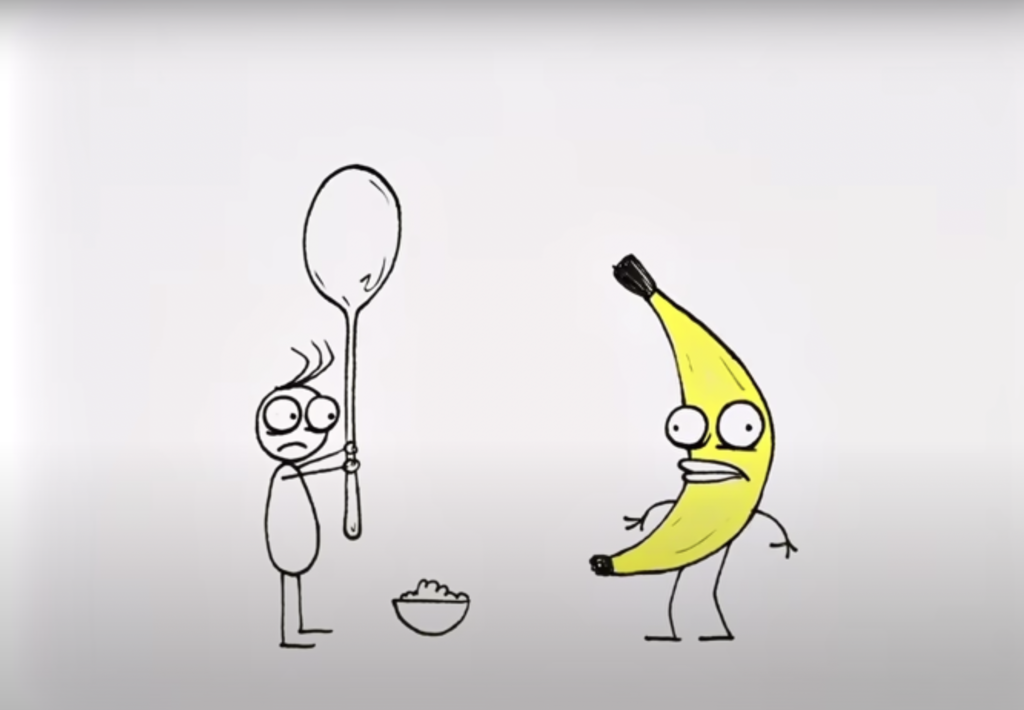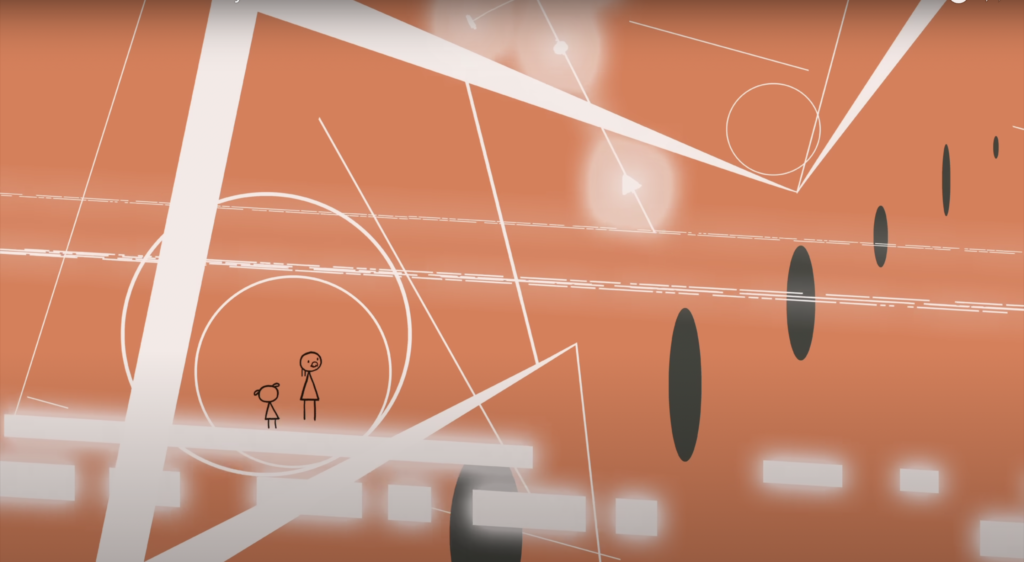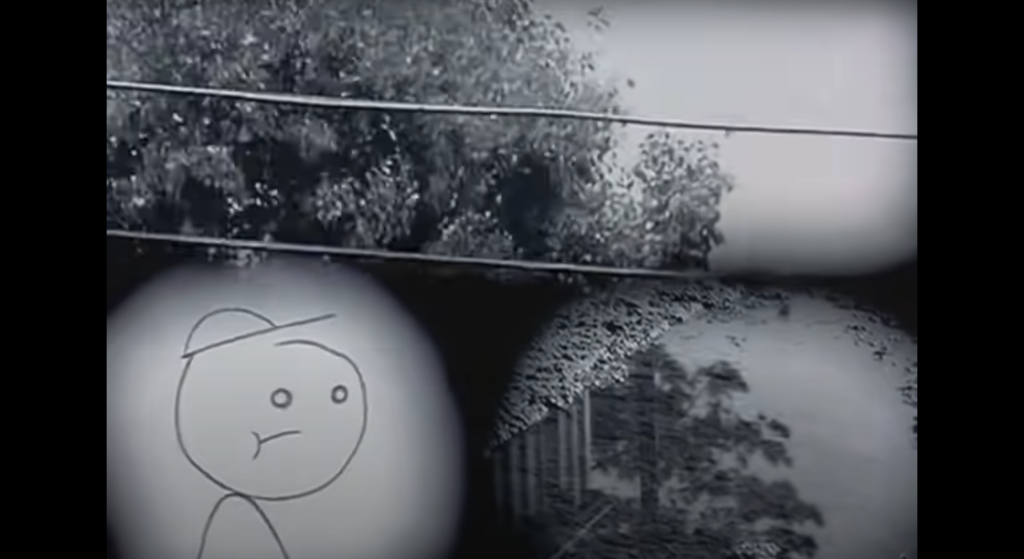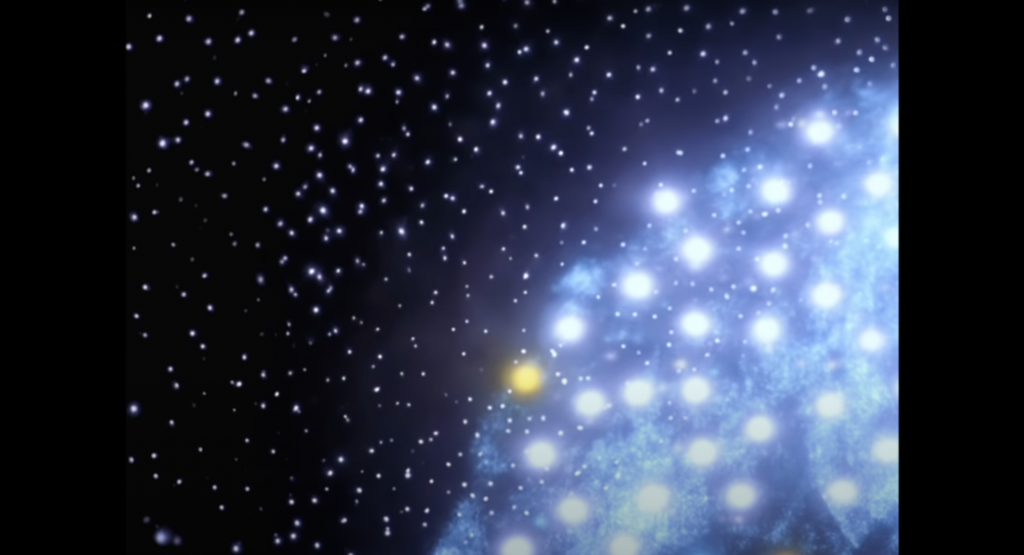| Jeremy Warden |

World of Tomorrow: The First Three Episodes plays at the Trylon Cinema from Friday, January 20 through Sunday, January 22. Visit trylon.org for tickets and more information.
“I believe the human brain is attracted to whatever errors it can perceive in art,
and that’s part of what makes stop motion so appealing to people.”
– Don Hertzfeldt
Maybe this isn’t exactly what he said, but reading that line in the director’s notes for a Bitter Films compilation DVD that would eventually become trapped inside a dead laptop of mine, a foundational creative philosophy was forged into my 17-year-old brain—and I’m not even an animator, I’m a musician. But that is the kind of grip Hertzfeldt’s work has had on me throughout my life. I have shown his work to teachers, parents, love interests, countless friends, even some complete strangers, and I’m sure I’m far from his biggest fan.
Don Hertzfeldt is a Californian Leo born in 1974. Apparently, when he was studying film at UC Santa Barbara, he was so broke that he decided to try stop-motion animating for the first time, simply because that way, he could get paid as a one-man operation. This is perhaps why, particularly in the beginning, his characters are often literal stick figures. However, even in his student films, such as Billy’s Balloon or Genre, there is an out-of-the-box approach toward texture and absurdity that immediately defines and sets apart his style—the same sort of fresh simplicity that makes punk music so gripping.
With a quick Google search you will immediately see Hertzfeldt’s work described as “some of the most influential animation ever created,”1 “the most vital and expressive animation of the millennium”2 and “some of the most essential short films of the last 20 years.”3 But I most fondly remember his work being described as “one of the most offensive things I have ever seen” by one film historian in those same director’s notes, in response to a scene of a fluffy cloud stick figure bleeding out of their butt.

I first discovered Hertzfeldt’s work as a young teenager in a world where the smartest phones were BlackBerries and the word “meme” was only understood by millennials who could barely drive, mostly referring to pictures of cats eating food with text. In this early internet era, certain absurd videos on YouTube gained what would later be considered “viral fame”—videos like End of Ze World or Schfifty Five or Shoes or The Crichton Leprechaun. One of these videos was Hertzfeldt’s first short film post graduation, entitled Rejected, which features a series of stick figure characters in fake advertisements slowly getting murdered as clients reject them in some twisted visual metaphor for the caustic realities of capitalism’s grip on artistic work. Allegedly, this was inspired by Hertzfeldt’s actual failed attempts at landing jobs as a commercial animator, and although I doubt most 13-year-olds watching on dial-up YouTube fully grasped the cultural criticism, the point is that every one of my friends would walk around our hallways saying things like “MY SPOON IS TOO BIG” or “FOR THE LOVE OF GOD AND ALL THAT IS HOLY, MY ANUS IS BLEEDING” like a scratched CD stuck skipping the same fractured refrains on repeat.
Most of these videos and their creators eventually fade into obscurity, much like the characters of Rejected—but Hertzfeldt was on to something greater. His drawings on paper really looked like they were on paper, with crumples, smudges, and tears. There were human errors in every single frame that kept me and many others coming back again and again, until the higher level of intention became clear through the absurd and brutal humor. In a nutshell, Hertzfeldt became a cult phenomenon, and after slingshotting himself into the major leagues through a collaboration with Mike Judge on Rejected’s follow-up, entitled The Animation Show, Hertzfeldt made a pivot that, in hindsight, we all should have seen coming.
Between 2006 and 2011, Hertzfeldt released three short films: Everything Will Be Okay, I Am So Proud of You, and It’s Such A Beautiful Day. To say the artist leveled up or perfected his craft feels like an understatement here. Hertzfeldt began to draw on imagery and themes previously unexplored, and told the story of a man named Bill who slides down a slow health decline—both physical and mental—exploring themes like death, loneliness, life’s meaning, family, betrayal, genetics, love, and existentialism, all centered around a stick figure in a fedora surrounded by a surreal flow of hand-drawn clips, bits of light, and moving photographs.

I cannot put it another way: those three movies changed my life. To me, they are on par with any profound and moving work of film, right up there with The Diving Bell and the Butterfly, City of God, or Requiem for a Dream—you name it. It is the work that set Hertzfeldt apart and moved him from niche absurd animator to profound and critically adored filmmaker. It set the stage for what I believe many would agree to be his magnum opus thus far, the film brought to you by the lovely Trylon community.
World of Tomorrow shows Hertzfeldt culminating all of the creative themes and visual innovations he had explored and developed into a whole new kind of film, hybridizing hand-drawn and digital animation for the first time. The greatest of these narrative themes is an old favorite of artists: memory. What are we as people beyond our memory? What is a life outside of the memories it holds? How can memory be shared or destroyed and what effect does that have on our perceptions of ourselves and the life we’ve lived, of those around us?
World of Tomorrow is another story in three parts, revolving around a woman named Emily Prime. In the beginning, playful, toddler-age Emily is visited by a third-generation, fully-adult clone of herself, arriving via time travel from the distant future where the Earth is about to be destroyed by a meteor. Clone Emily has all of past Emily’s memories uploaded into her consciousness and takes Original Emily on a tour through their lives via an immersive VR sort of Metaverse experience called the “Outernet,” eventually hoping to steal a cherished memory back from Original Emily. Later, the story performs a distorted repetition of itself as a sixth rate back-up copy of Emily’s aforementioned third generation clone tracks Original Emily down after learning that her assigned clone died in the meteor shower. In the final act, a ninth rate back-up copy of another Emily clone uses the same time travel and memory mining technologies to contact a later, space-bound clone—Emily’s third clone’s husband, David—evolving into a murder mystery sci-fi love story hybrid as David tries to prevent a past back up copy of himself from murdering another past clone … of himself.

If the story sounds heady, meta, and layered, that’s because it is, but remember that the main character is about four years old and so every spiraled and stacked layer of the time-traveling, memory-sharing feedback loop is comically broken down into a language and aesthetic fit for a child. The viewer ping-pongs back and forth between being confronted with the most profound paradoxes of identity and being grounded by non-sequiturs stemming from a child’s curious imagination, taking them to Triangle Land or drawing them a random bunny.
This balance is what has always been at the core of Hertzfeldt’s works. Although the scale has lately tipped more towards the existential and scientific, the messages are always packaged in something fun, absurd, and ever-close to childish. Full of color and cartoonish simplicity, Don Hertzfeldt captures his smirking and melancholic sense of wonder for all of us to admire and mull over again and again with increasing clarity and expertise.
In the director’s notes for that same DVD, Hetzfeldt also says that “all movies are meant be experienced in silence, in a completely dark room, on the biggest screen you can access, with the volume as loud as you can bear,” so it is with great excitement and urgency I implore you all to take up this rare opportunity to attend World of Tomorrow at the Trylon Cinema January 20th through the 22nd—and remember to be proud of your sadness, for it is what makes you more alive.
NOTES
1 Marc Savlov, “Beautiful Bitter: The heartachey animation of Don Hertzfeldt,” Austin Chronicle (November 11, 2011), https://www.austinchronicle.com/screens/2011-11-11/beautiful-bitter/
2 David Ehrlich, “Sundance 2015: Don Hertzfeldt,” Little White Lies (January 15, 2020), https://web.archive.org/web/20151017062235/http://www.littlewhitelies.co.uk/features/festivals/sundance-2015-don-hertzfeldt-29015/
3 Ehrlich, “Don Hertzfeldt on ‘World of Tomorrow Episode Two’ and Expanding Upon the Best Short Film of the Century,” IndieWire (November 17, 2017), https://www.indiewire.com/2017/11/don-hertzfeldt-interview-world-of-tomorrow-episode-two-oscars-1201890607/
Edited by Olga Tchepikova-Treon
